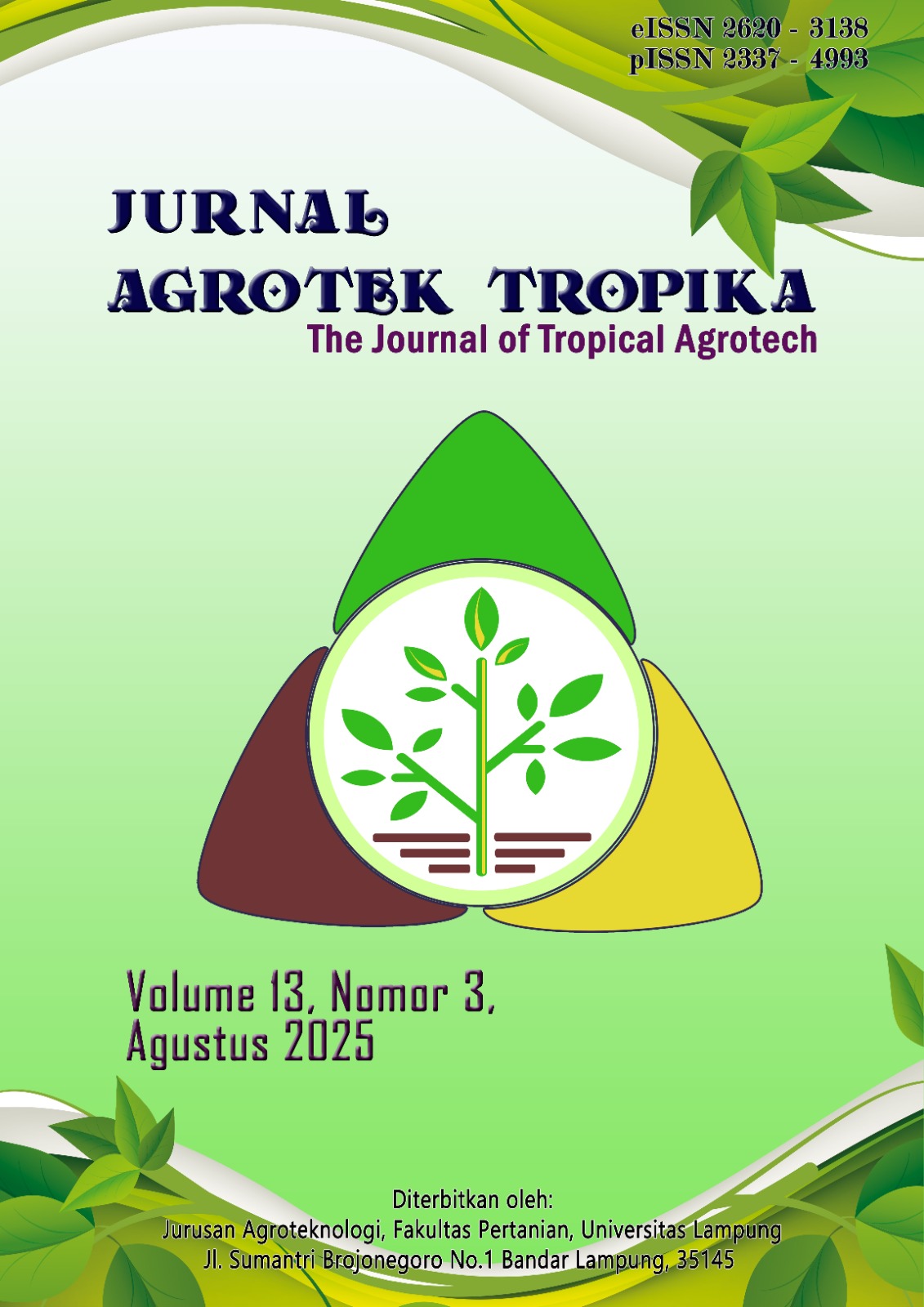INTENSITY OF COFFEE BERRY BORER (Hypothenemus hampei) (Ferrari) ATTACKS IN SEVERAL AREAS IN BANDUNG REGENCY
Abstract
Coffee Berry Borer (CBB), Hypothenemus hampei (Ferrari) is the main pest in coffee plantations. Initially, CBB attacks were only on lowland coffee (0-700 m asl), but currently highland coffee (above 1000 m asl) is not spared from this pest attack. The purpose of this study was to examine the intensity of CBB in several coffee plantation areas in Bandung Regency. Samples were taken from three coffee-producing locations, i.e., Cilengkrang District, Cimaung District, and Pangalengan District. Sampling using brocap traps and attack intensity through direct observation of the affected fruit. The identification was conducted at the Pest Laboratory, Faculty of Agriculture, Universitas Padjadjaran. Climatic conditions were recorded during the sampling period from July 2023 to June 2024. The results showed that the level of CBB infestation in coffee plantations in Bandung Regency was relatively low, with the highest infestation in the Cilengkrang area (21.36%), followed by Cimaung (13.09%), and the lowest in Pangalengan (8.32%). The catch of CBB in the Cilengkrang area showed the largest number, an average of 974,2 individuals per trap and the ratio of male to female sex is 1:10. In coffee fruits, the most common were larvae stage, averaging 5.93 individuals per berry. Coffee berry damage was generally higher in red fruits than in yellow and green fruits, even though the damaged seeds were only partially affected. PCA analysis indicated that humidity and temperature had a significant impact on the intensity of CBB in comparison to other factors.
Downloads
Published
How to Cite
Issue
Section
License
Copyright (c) 2025 pitri - pebriani

This work is licensed under a Creative Commons Attribution 4.0 International License.
Jurnal Agrotek Tropika (JAT) is licensed under a Creative Commons Attribution 4.0 International License.
The copyright holder is the author. Authors publishing under any license allowed by the journal retain the copyright and full publishing rights without restrictions.
The Creative Commons Attribution 4.0 International (CC BY 4.0) license allows users to copy, distribute, and adapt the work, even for commercial purposes, as long as proper attribution is given to the original creator. This is a highly flexible license that encourages widespread dissemination and use of creative works, supporting innovation and collaboration across various fields.











